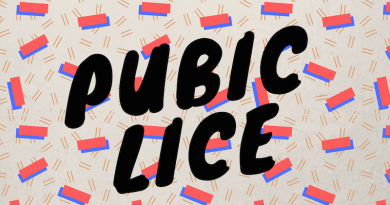Making cervical screening easier if you’re trans+
Going to sexual health appointments like cervical screening (smear tests) can be particularly difficult for trans+ people – here are some tips that might make it easier
Trans+ people might have more struggles with cervical screening than cisgender (cis) people when going to sexual health clinics. For example, they might have to deal with gender dysphoria or worries about how healthcare staff will treat them.
Cervical screening (known as a ‘smear test’) is a process where a speculum is inserted into the vagina. This allows healthcare professionals to view the cervix and take a small sample of cells to test for any abnormalities. The test is looking for any signs of abnormalities so that any problems can be caught early and treated. It’s a preventative test, to catch anything serious developing.
Improving health services for trans+ people is necessary but lots of changes are needed to do this. We need better medical education for health professionals, more inclusive health policies, and a change in how society views trans+ people.
In the meantime, there are some small changes that might make the appointments easier for you. I spoke to 15 trans+ people, as part of my PhD project, who told me how they cope with cervical screening. Here are some of their top tips which may be useful in other types of health appointments too!
Making the cervical screening procedure easier
- You can ask for a smaller speculum to be used. This may help to ease the discomfort you might feel during the exam. You can also ask to insert the speculum yourself to give you more control!
- You can book a double appointment so you can talk through any worries with the health professional beforehand. This will also give you the time you need to look after yourself afterwards.
- Ask the health professional to take their time, to explain what will happen, and to check in with you before they do anything.
- One person I spoke to had their cervical screening done at the same time as their testosterone injection. This meant they had something more affirming in the same appointment. If you use hormones you can ask if this can be done for you too!
Advocating for yourself
Advocating for yourself can be really hard, especially in a medical setting. But you deserve to receive the care you need in a way that makes you feel comfortable and respected.
Ideally, every medical and healthcare professional would’ve had training to provide fully inclusive care, but we know this isn’t a reality right now. So, here are some tips for navigating these interactions:
- Ask the health professional to use your correct name and pronouns. If you don’t feel safe to do this, it’s okay to not ‘come out’ during the appointment. You’re still your gender either way!
- You can take a trusted person with you. They can help advocate for you, or provide whatever support you might need.
- Remember, if you feel uncomfortable at any point you can ask for the procedure to stop. You can try again afterwards, or go back another day. This is completely okay! You are in control of what happens to your body.
I’d also recommend doing something more affirming after the appointment, especially if you suspect the procedure will make your dysphoria worse. This could mean talking it through with trusted people, or doing something to distract yourself, like meeting up with people who help you to feel affirmed in your gender. Or you could go to queer spaces such as your local queer bookshop!
This doesn’t completely solve the problem, but it’s something nice you can do for yourself after doing something that, while good for your body, might feel difficult.
Dee has some more tips and reminders for anyone who has to visit the gynaecologist:
Remember that going to cervical screening is an important part of looking after your health and helps you to take care of your body. It doesn’t take away from or invalidate your identity as trans+.
Ge, they/them
This article is part of our “Am I Trans?” Translating Sex, Identity & Relationships content series: supporting trans+ young people to access sex and relationships education that is relevant to their experiences and needs. Discover the full series here.
We use the term trans+ in our articles as an umbrella term intended to incorporate all transgender, non-binary, agender and genderfluid identities.
Some of the content addresses potentially triggering topics, such as transphobia and gender dysphoria. We’ve added specific content warnings to these pieces, but please take a moment to check in with yourself and how you’re feeling before diving into the series.
Other support
- Discover the full series
- Support & resources for trans+ young people
- Switchboard helpline – for anyone, anywhere in the country, at any point in their journey to discuss anything related to sexuality and gender identity
- Gendered Intelligence – Knowledge is Power resource for young trans+ people
Read more
Last Reviewed 22 April 2024
Image Credit: Alexander Grey via Unsplash






